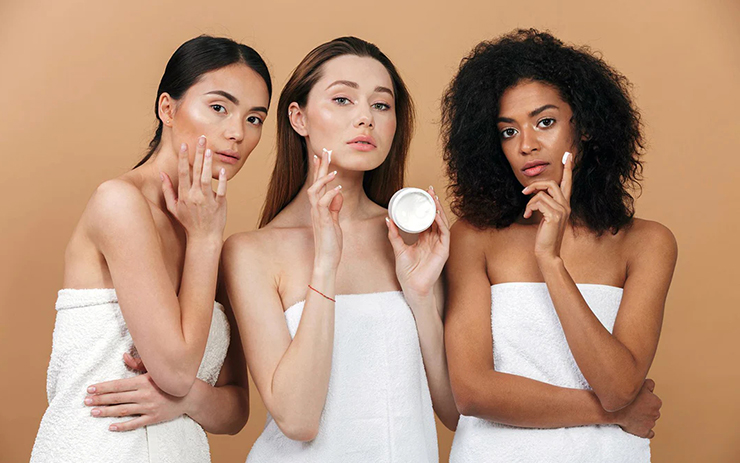How to Determine Your Skin Type

To understand what kind of skin care cosmetics to use, you need to correctly determine your skin type. Otherwise, it will be almost impossible to achieve the expected result and you will waste time and money in vain. The Fashiongton Post will tell you what are the main skin types, how to determine yours, and whether it can be changed.
Certain knowledge will help you to see the real effect of using a face care cream. Skin care cosmetics only work on the skin for which it was originally designed. For example, if you have dry skin, then using products for oily skin or even combination skin can lead to irritation, excess sebum production, skin tightness, wrinkles and acne.
It is important to understand the difference between concepts such as “skin type” and “skin problems”. The point is that wrinkles, hyperpigmentation, acne and other changes are common to all skin types. In addition, various pathologies can appear or disappear with time, age, hormonal changes and be caused by environmental influences. Skin problems can be eliminated, cured, but the skin type remains unchanged.

What affects skin type?
- Genetics: skin type and condition is inherited.
- Influence of the environment: moving to another climatic zone can lead to changes in skin conditions.
- Hormones: hormones change throughout life, especially with age, pregnancy and childbirth.
- Medications: for example, oily skin can become dry, and sensitive skin can suddenly become normal, or vice versa.
- Diets: malnutrition, the abuse of fatty, spicy, salty and smoked foods negatively affects the skin and body.
- Allergies: allergies affect the skin in most cases.
- Wrong care: use of inappropriate care products leads to negative skin reactions.

How to determine your skin type?
Step 1: Wash off make-up, thoroughly cleanse your face of impurities.
Step 2: Pat your skin dry with a tissue or soft towel. Do not wipe your face with lotion or micellar water after washing, do not apply any moisturizers and serums.
Step 3: Wait 1 hour. During this time, do not touch your face.
Step 4: Evaluate the results.
- The skin is tight and itchy, there is a slight peeling — dry skin type.
- The skin is shiny and looks greasy, especially in the T-zone — oily skin type.
- Skin is oily in the T-zone, but dry or normal on the cheeks and jawline — combination skin type.
- The skin looks even and beautiful, without signs of dryness or excessive oiliness — normal skin type.
- The skin is irritated and inflamed, there is itching and redness — a sensitive type of skin.


